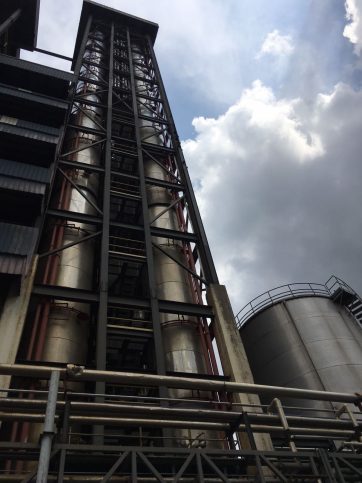Table of Contents
- Introduction to Fat Splitting
- What is Fat Splitting?
- Key Steps in the Fat Splitting Process
- Hydrolysis Reaction
- Separation of Fatty Acids and Glycerol
- Purification and Refining
- Industrial Applications
- Oleochemical Industry
- Food and Beverage Sector
- Pharmaceutical and Cosmetic Production
- Advantages of Fat Splitting in Manufacturing
- Challenges in Fat Splitting and Process Optimization
- The Role of Technoilogy in Advanced Fat Splitting Technologies
- Expertise in High-Efficiency Hydrolysis Systems
- Commitment to Quality and Sustainability
- Conclusion
Introduction to Fat Splitting
Fat splitting is a fundamental process in oleochemical production, where natural fats and oils are broken down into their basic components: fatty acids and glycerol. This process is critical in industries that require high-purity fatty acids for applications in cosmetics, food, pharmaceuticals, and bio-based chemicals.
By refining and optimizing fat splitting techniques, industries can maximize efficiency, product quality, and sustainability, ensuring that natural fats are processed into valuable derivatives with minimal waste.
What is Fat Splitting?
Fat splitting is a hydrolysis reaction that separates triglycerides (fats and oils) into fatty acids and glycerol. This is achieved by reacting fats with water under high temperature and pressure, often using catalysts to accelerate the reaction.
The resulting free fatty acids are used in soaps, detergents, and personal care products, while glycerol serves as a base for pharmaceuticals, food additives, and industrial applications.
Key Steps
1. Hydrolysis Reaction
- Triglycerides (fats or oils) are mixed with water and exposed to high pressure (30-60 bar) and temperatures (200-260°C).
- This leads to hydrolysis, breaking the triglycerides into free fatty acids and glycerol.
- Catalysts, such as mineral acids or enzymes, may be used to enhance reaction speed and efficiency.
2. Separation of Fatty Acids and Glycerol
- After hydrolysis, the reaction mixture contains a mixture of fatty acids and glycerol along with unreacted water.
- The two phases are separated via gravity settling or centrifugal techniques.
- Fatty acids move to the top layer, while glycerol and water settle at the bottom, allowing for easy extraction.
3. Purification and Refining
- The fatty acid phase undergoes further refining through distillation or bleaching to remove impurities.
- Glycerol purification involves vacuum distillation or ion exchange resins to enhance purity for use in cosmetic, pharmaceutical, and food applications.
Industrial Applications of Fat splitting
1. Oleochemical Industry
Fat splitting is essential for the oleochemical sector, where fatty acids are transformed into:
- Soaps and detergents
- Lubricants and surfactants
- Bio-based plasticizers and emulsifiers
Advantages of Fat Splitting in Manufacturing
- Maximized Product Yield – Efficient hydrolysis ensures maximum recovery of fatty acids and glycerol.
- High Purity and Quality – Advanced separation techniques allow for the production of high-grade oleochemicals.
- Environmentally Friendly Process – Fat splitting enables the utilization of renewable natural resources, reducing dependency on petrochemicals.
Conclusion
Fat splitting is a critical process in oleochemical and industrial production, ensuring the efficient breakdown of natural fats into valuable fatty acids and glycerol. Through high-pressure hydrolysis, separation, and purification, manufacturers produce high-quality ingredients for soaps, pharmaceuticals, cosmetics, and food additives.
As industries shift toward sustainable raw material processing, fat splitting remains at the forefront of green chemistry solutions. Technoilogy continues to drive innovation in fat splitting technology, providing high-performance and environmentally responsible solutions for the global market.

